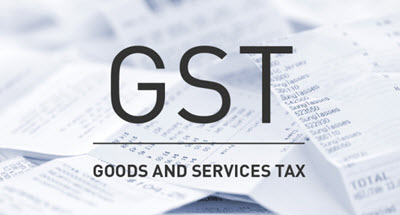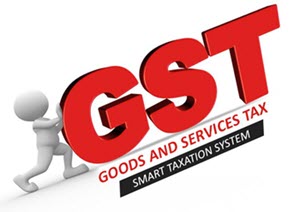GOODS AND SERVICES TAX (GST)
As you are aware that the Goods and Services Tax (GST), the biggest reform in India’s indirect tax structure rather we can say that the biggest business reform in India since Independence, at last set to become reality and which may be roll out from 1st April 2017.
PROPOSED GST:
Dual GST: Both Centre and States will simultaneously levy GST across the value chain on the same base. Tax will be levied on every supply of goods and services.
Under GST following Central and states Taxes will be subsumed:
| Central Taxes to be subsumed | States Taxes to be subsumed |
|---|---|
| Central Excise Duty | VAT/Sales Tax |
| Additional Excise Duty | Central Sales Tax (levied by the Centre and collected and retained by the States) |
| Service Tax | Octroi and Entry Tax (all forms) |
| Additional Customs Duty, commonly known as Countervailing Duty (CVD) | Purchase Tax |
| Special Additional Duty of Customs-4% (SAD) | Luxury Tax |
| Cesses and surcharges in so far as they relate to supply of goods and services | Taxes on lottery, betting and gambling State cesses and surcharges in so far as they relate to supply of goods and services |
MODEL GST LAW: The Finance Ministry released the ‘Model GST Law‘ on June 14, 2016. The model outlines the structure of the GST regime. The draft of ‘Integrated GST Bill, 2016‘ is also released along with it. This provides the framework for levy and collection of CGST, SGST and IGST. There are 25 Chapters, 162 Sections, Four schedules, Rules as to valuation under GST Act, 2016. There are 9 Chapters and 33 Sections under IGST Act, 2016.
HERE ARE THE KEY FEATURES OF THE MODEL GST
Some categories of persons who shall be required to be registered under this Act irrespective of the threshold like persons making interstate supply, persons required to pay tax under reverse charge, nonresident taxable persons. Etc.
| S.No. | Form No. | Purpose | Due Date |
|---|---|---|---|
| 1 | GSTR-1 | Outward supplies made by supplier(other than compounding tax payer and ISD) | 10th of next month |
| 2 | GSTR-2 | Inward supplies received by a tax payer(other than compounding tax payer and ISD) | 15th of next month |
| 3 | GSTR-3 | Monthly return (other than compounding tax payer and ISD) | 20th of next month |
| 4 | GSTR-4 | Quarterly return for compounding Tax payer | 18th of next month |
| 5 | GSTR-5 | Periodic return by non –resident foreign tax payer | Last day of registration |
| 6 | GSTR-6 | Return for ISD | 13th of next month |
| 7 | GSTR-7 | Return for TDS | 10th of next month |
| 8 | GSTR-8 | Annual Return | 31st December of next Financial |



